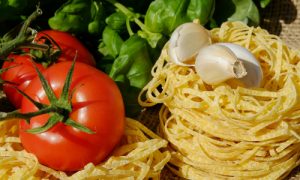As Thanksgiving approaches, business reporters ought to start thinking about the cranberry industry and features around this small but powerful fruit. This blog outlines the important themes and news.
The core producers
Wisconsin produces 60 percent of the U.S.’s cranberry production, according to the U.S. Department of Agriculture. Massachusetts is the next highest producer followed by New Jersey. Wisconsin and Québec are two newer regions producing cranberries. According to the Agricultural Marketing Resource Center, Americans consume around 400 million pounds of cranberries annually—20 percent during Thanksgiving week. The forecast for the 2016 cranberry crop is 8.59 million barrels, up slightly from 2015.
Massachuetts’ cranberry crisis
Cranberries have been cultivated in Massachusetts for 200 years. Historians report that Native Americans showed the pilgrims how to use cranberries for food and how to extract their dye for blankets, clothes and textiles. The state is experiencing a serious drought that jeopardizes the farmers’ ability to flood the bogs. According to this report, for the industry to stabilize, production must become more efficient, producers must make better use of cranberry bogs and the industry as a whole must become more viable for producers.
The original superfood
As Web M.D. reports, cranberries are loaded with vitamin C and fiber, and out-do any fruit or vegetable in terms of antioxidants. Native Americans used to incorporate cranberries into pemmican, a survival cake. The vitamin-rich fruits traveled abroad whaling ships to help ward off scurvy, and cranberries helped sustain troops during World War II, when American troops required 1 million pounds of dried cranberries a year.
A brand evolution
Ocean Spray, a $2 billion cooperative of cranberry growers with 700 grower-owners, started in 1930. Cranberry juice cocktail, its first juice blend, launched in 1964 and became a huge success, triggering new blends to follow. Craisins—dried, sweetened cranberries—were first introduced in the late 1980s as ingredients for breakfast bars and cereals. After Ocean Spray marketers positioned them as healthy snack foods, the Craisin business took off and is now worth $400 million a year.
Reporter’s Takeaway
• The industry has shifted from its east coast roots to Wisconsin, which now produces 60 percent of U.S. cranberries. There’s a cranberry crisis in Massachusetts, the fruit’s first home, where drought, combined with inefficient production, challenges farmers.
• Cranberries are loaded with vitamin C, fiber and antioxidants. Their health benefits have helped Native Americans, whalers and World War II soldiers.
• Today, Ocean Spray, the world’s largest cooperative of cranberry growers with over 700 grower-families, uses cranberries in juice and juice blends, but one of its biggest success is Craisins.











